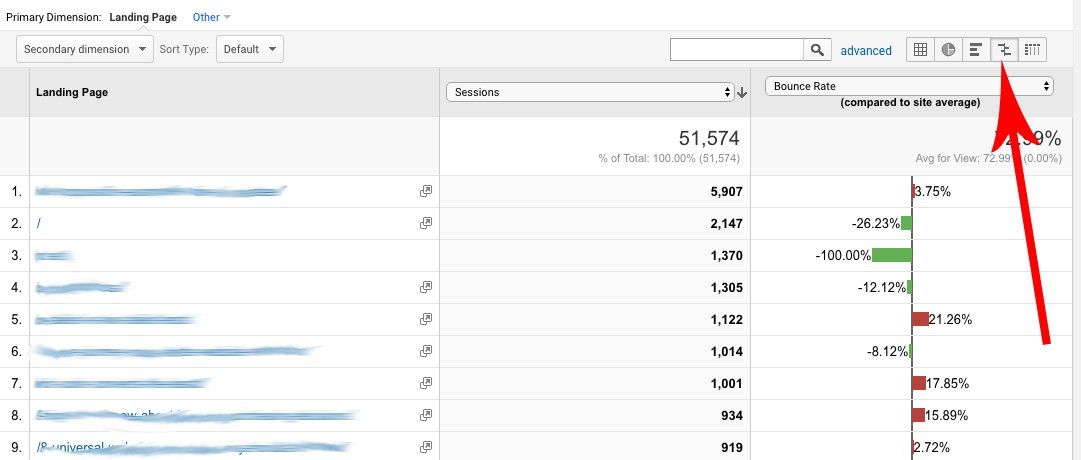Author: Fahad Muhammad / Source: Business 2 Community When creating landing pages, marketers tend to focus all their efforts on optimizing
When creating landing pages, marketers tend to focus all their efforts on optimizing page elements — making sure the headline engages the visitor, testimonials speak to your unique value proposition, the lead capture form is correctly formatted, and the CTA button jumps off the page.
That’s all marketers need to generate high quality leads, right?
Then why is it that professional landing pages — getting decent traffic numbers — don’t produce conversions a lot of the time?
It’s because marketers forget about the visitor in the conversion equation.
Remember the Other Side of the Conversion Equation
Persuading landing page visitors to convert doesn’t only depend on the offer and page elements; it’s also contingent on the visitor.
It wouldn’t matter if your landing page elements are optimized perfectly, and the page is receiving steady traffic. If the visitor has no interest in the offer, or if you’re not targeting them at their current place in the funnel – they won’t convert no matter how persuasive the page is.
To fulfill your conversion goals, the most appropriate prospects should see your offer.
If your conversion rates are suffering, don’t immediately conclude that you need to tweak your page elements through A/B testing. First investigate whether there’s something wrong further up the funnel.
So how do you determine if your page is a victim of mismatched traffic? The answer lies in your data.
How to Determine if Your Landing Page is Getting Mismatched Traffic
If there’s a significant gap between the number of page visits and the number of conversions, there is clearly a disconnect.
Looking at the bounce rate can tell you whether or not the page is fulfilling your visitors’ expectation. A high bounce rate shows you either your page elements aren’t optimized or there’s a mismatch between your page and traffic sources.
Don’t worry about what you think is a good conversion rate, or what you think is a good bounce rate. Instead, open up Google Analytics and go to Behavior > Site Content > Landing Pages and use the comparison feature to analyze which landing pages are performing well in comparison to your other pages.

For pages that have a lower conversion rate than average, analyze your traffic sources because your pages could be suffering from mismatched traffic, which could be because of one or both of the following reasons:
- Persona Conundrum — The visitor coming to the page has nothing in common with your targeted buyer persona.
- Mismatch Conundrum — There is a message mismatch in the pre-click experience, bringing the wrong visitors to your page.
Let’s analyze both of these conundrums separately and discuss how you can avoid them.
The Buyer Persona Conundrum
Buyer personas are a research-based model that attempts to represent to a degree of accuracy how your customer buys, thinks, behaves, etc.
You generally use this either to match your marketing communications and messaging strategy with what aligns to your customer profile, or to fuel product design and development decisions.
Depending on your current stage in the customer research process, your buyer persona knowledge can vary from a few scribbled notes about your target customers’ desires to complete persona cards built with quantitative and qualitative data from a large sample size:

Landing pages should be designed with your target audience in mind. The point of buyer personas is to have an evidence-based guideline to help you build experiences that cater towards your idea customer profile. It doesn’t take the place of testing, but it’s a good starting point for your marketing.
Now imagine a prospect who doesn’t fit your buyer persona arriving at your page — the page elements won’t make sense to them. The offer would be useless to them and exiting the page without converting is the only logical action. For example, a user looking to book a hotel for a big family reunion might click an ad for a bed and breakfast, but they won’t click the call to action button because the offer of a small room at the bed and breakfast is not something they’re looking for.

Translation: the wrong traffic is coming to your page. It doesn’t matter how optimized your CTA is in this case.
This is the time to see if visitors coming to your page reflect your ideal customer profile, because chances are, the assumptions you’re making about your page traffic are wrong. Because the bottom line is, if you’re like most marketers you’re getting the wrong landing page traffic, your best opportunity to increase your conversion rate is to improve the quality of your traffic.
After conducting more than 2,000 AdWords audits, Disruptive Advertising found that only 12% of their PPC keywords produce 100% conversions. What’s even worse is the fact that 88% of keywords accounted for 61% of ad spend — on the wrong traffic.
Let’s see how the wrong traffic can negatively affect your bounce rate and conversion rate simultaneously, highlighted by Disruptive Advertising.
A while back, the agency promoted their Valentine’s Day-themed blog post on Facebook:

Although the agency had completed…

COMMENTS